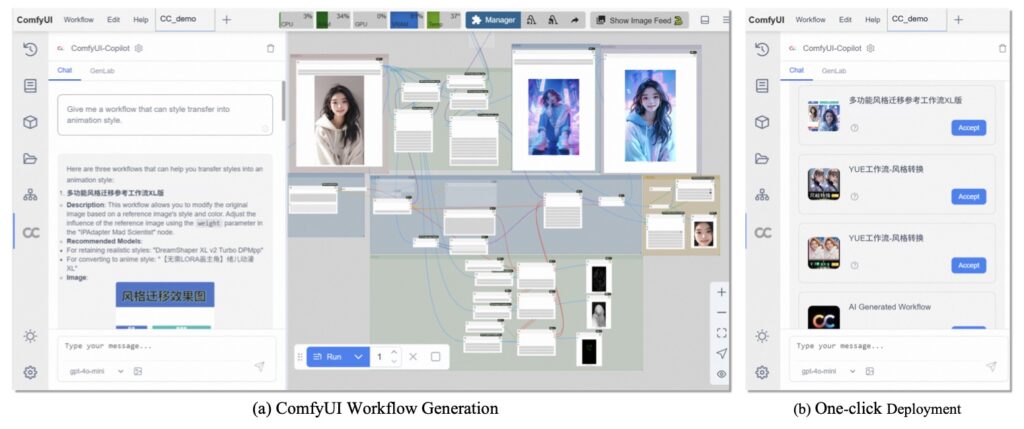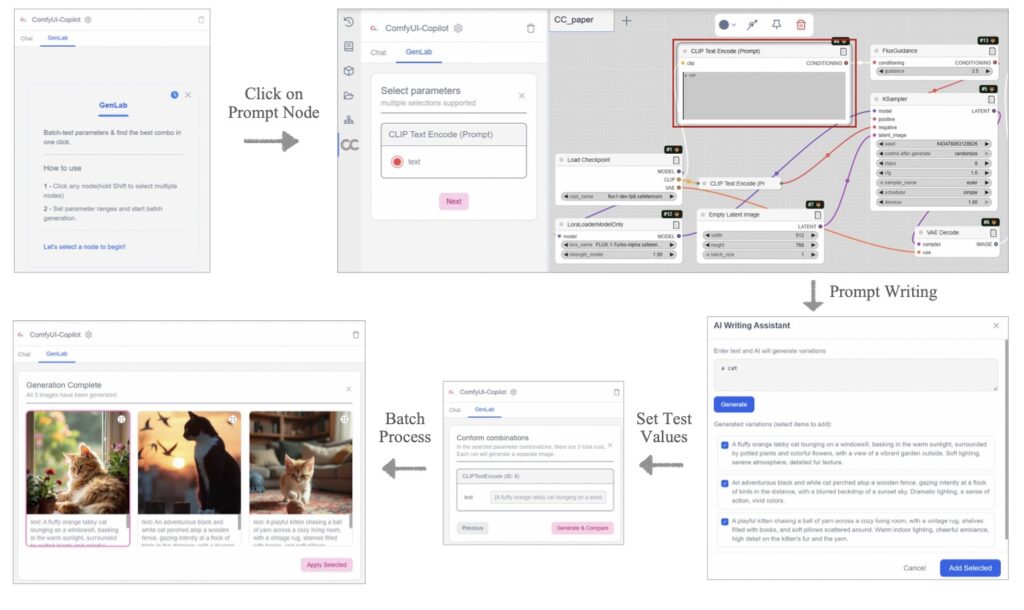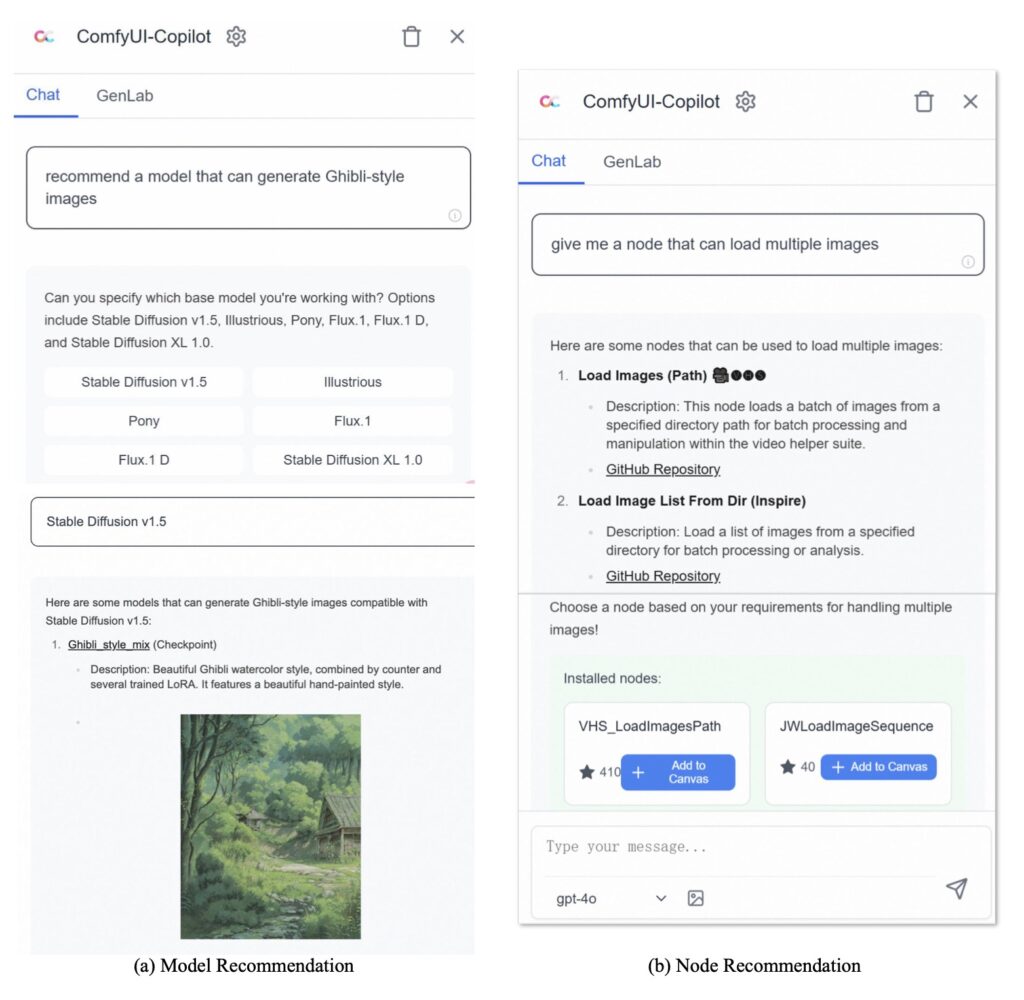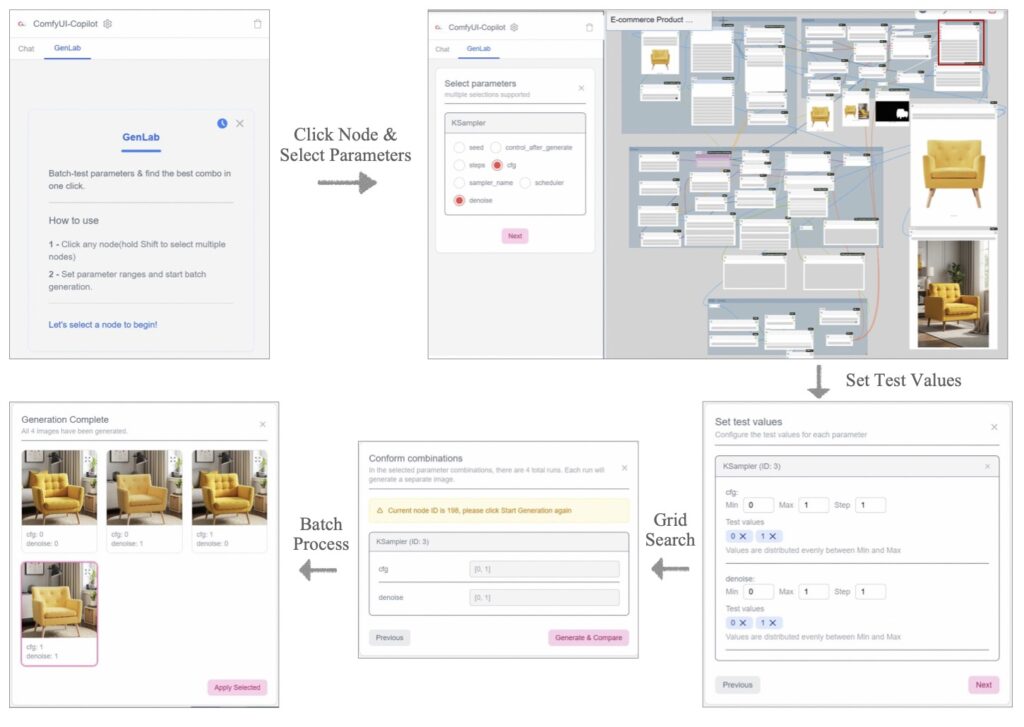Streamlining Workflow Development for Beginners and Experts Alike
- ComfyUI-Copilot is an innovative, large language model (LLM)-powered plugin designed to simplify the complexities of ComfyUI, an open-source platform for AI-driven art creation, by offering automated workflow generation and intelligent recommendations.
- With a hierarchical multi-agent framework, it tackles common challenges like limited documentation and model misconfigurations, making it easier for newcomers to onboard and for experienced users to optimize their workflows.
- Backed by extensive user feedback and quantitative evaluations, ComfyUI-Copilot has proven effective in accelerating workflow development, lowering entry barriers, and supporting a vibrant community of over 19K users worldwide.

ComfyUI has emerged as a game-changer in the realm of AI-generated content (AIGC), offering a low-code platform that empowers over 4 million active users to create stunning multimodal art through text-to-image generation, face swapping, and video editing. With a vibrant community contributing over 12,000 components, including cutting-edge tools like SDXL and ControlNet, ComfyUI’s drag-and-drop interface provides unparalleled flexibility for workflow orchestration. However, despite its user-friendly design, the platform poses significant hurdles for many. Newcomers often grapple with scattered documentation across forums and GitHub issues, struggle with installing dependent nodes and models, and find the intricacies of workflow design daunting. Even seasoned users need substantial expertise to debug issues and craft efficient workflows. This is where ComfyUI-Copilot steps in, an intelligent assistant powered by large language models, designed to transform the user experience by automating and simplifying the creative process.

At its core, ComfyUI-Copilot leverages a sophisticated hierarchical multi-agent framework. A central assistant agent acts as the brain, delegating tasks to specialized worker agents tailored for specific functions, all supported by curated knowledge bases specific to ComfyUI. This structure enables the plugin to address a wide array of user needs, from answering detailed questions about nodes and models to providing actionable solutions for debugging and deployment. Whether it’s recommending the right checkpoints or LoRA models, suggesting downstream subgraphs for selected nodes, or offering step-by-step tutorials on installation and parameter settings, ComfyUI-Copilot ensures users have the guidance they need at every step. One of its standout features is the one-click workflow construction, which identifies user intent, retrieves or synthesizes an appropriate workflow, and seamlessly integrates it into the ComfyUI canvas. This automation not only saves time but also reduces the frustration of trial-and-error often experienced by beginners.

The impact of ComfyUI-Copilot extends beyond just technical assistance; it fundamentally lowers the barriers to entry for AI art creation. For those new to ComfyUI, the plugin acts as a patient mentor, guiding them through the maze of model configurations and workflow complexities with clear, actionable advice. For experienced users, it serves as a powerful tool to enhance efficiency, offering advanced features like prompt writing assistance, parameter search, and workflow optimization. The system’s ability to stay updated with the latest modules in multimodal generation ensures that users always have access to cutting-edge tools and techniques. This adaptability is crucial in a field as fast-evolving as AIGC, where staying current can mean the difference between a good project and a groundbreaking one.

The effectiveness of ComfyUI-Copilot isn’t just theoretical—it’s backed by solid evidence. Through offline quantitative evaluations, the plugin has demonstrated a high recall rate in workflow generation and node recommendations, ensuring that its suggestions are both relevant and practical. Online user feedback further validates its impact, with many praising how it accelerates workflow development and simplifies otherwise tedious tasks. Since its launch, ComfyUI-Copilot has garnered over 1.6K stars on GitHub, attracted 19K users across 22 countries, and processed more than 85K queries, a testament to its widespread appeal and utility. These numbers reflect not just popularity but a genuine need within the ComfyUI community for a tool that bridges the gap between potential and practice.

Looking at the broader landscape, the rise of LLMs and advanced image generation methods has democratized AIGC, making tools like ComfyUI pivotal for creators who may lack deep technical expertise. Yet, as research highlights, automatic workflow construction has historically faced issues like instability and a narrow focus on tasks like text-to-image generation. ComfyUI-Copilot breaks through these limitations by offering a comprehensive solution that spans multiple use cases and prioritizes stability. It’s not just about generating a workflow; it’s about ensuring that workflow is functional, efficient, and tailored to the user’s specific goals. This holistic approach positions ComfyUI-Copilot as a pioneer, being the first project to explore a dedicated assistant plugin for instant suggestions within the ComfyUI ecosystem.

The future of ComfyUI-Copilot is bright and user-driven. The development team is committed to incorporating feedback from GitHub issues and continuously updating features to address pain points. Planned enhancements include automatic workflow and parameter optimization, which promise to further streamline the creative process. As the plugin evolves, it aims to not only keep pace with advancements in AI art creation but also anticipate the needs of its growing user base. For anyone dabbling in or mastering ComfyUI, whether a curious beginner or a seasoned pro, ComfyUI-Copilot is more than a tool—it’s a creative partner, ready to turn complex challenges into seamless artistry. How do you think such intelligent assistants could shape the future of creative platforms beyond just AI art? I’d love to hear your thoughts!

